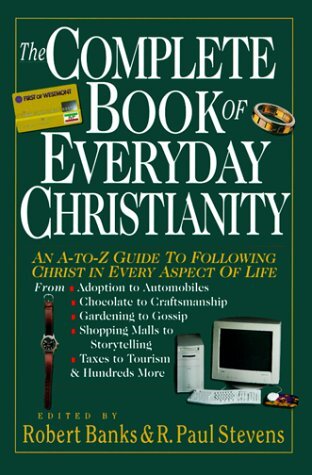Clubs
Book / Produced by partner of TOW
My first exposure to clubs was through my mother. Born in Newfoundland (now a province of Canada but then a colony of England), my mother joined the Toronto chapter of the Old Colony Club. They gathered weekly to talk about life back on “The Rock,” as Newfoundland was affectionately called, and performed many services to needy Newfoundlanders in Toronto. I remember especially her weekly visits to the tuberculosis sanatorium to bring gifts and cheer to the people interned there. Belonging to a club never seemed to her to be anything other than a practical expression of her commitment to follow Jesus. But it was many years later that I began to reflect on why she joined at all or why I should join a photography club.
Clubs Past and Present
Clubs are usually small, voluntary societies that people elect to join for the purpose of pursuing an interest or service with people of like mind and heart. Most clubs meet periodically, have tests or standards for membership, collect annual dues, have an elected hierarchy of officers and sometimes have their own building as a meeting place. The word club is sometimes used for the building that houses a club (“Let’s go down to the golf club”), for a building that houses a random group of people (a night club) or for an association of nations (such as the European Economic Club), but these senses of the word will not be considered in this article.
Today one faces an extensive array of clubs: social clubs, dinner clubs, hobby clubs, ski clubs, Christian clubs on the university or college campus, badminton clubs, racial clubs (like the Old Colony), rifle clubs, political clubs, women’s clubs, rowing clubs, Bible clubs, sewing clubs, yacht clubs, fitness clubs and book clubs, to mention a few in which the word is actually used. Then there are societies with membership and selective interests that are clublike without using the name club, such as professional societies, Rotary (a service club), trade unions (occupational clubs), the Masons (a service club with secret rituals), fraternities (select student clubs), writers’ groups (art clubs), volunteer orchestras (musical clubs), groups of people who regularly enjoy recreation together (mountain climbing clubs or kayak clubs), Morning Out for Moms groups in churches (a mothers’ club) and buddies who go to the same tavern at the same time (a drinking club). Gangs are really street clubs with initiation rites, codes of behavior and a common identity. It is sometimes argued, wrongly though not without reason, that even the local church is a club since it involves membership with people having a common interest and is a voluntary society in which persons can know and be known by others as they pursue a common interest. We will return to this later. The list above is not exhaustive, but it shows how club life permeates everyday life. But it is not just a modern phenomenon.
Men have always gathered in small groups outside the home, a privilege only recently accorded women.There is evidence of club life in earlier periods of civilization, for example, the social, athletic, occupational, political, philosophical and religious collegia or societies that were so characteristic of the first-century Greek and Roman world. Membership in the guilds proved to be a terrible dilemma for the Christian tradespeople in the seven churches of Asia since, as evidenced in the last book of the Bible, these were associated with pagan religious rituals and sexual orgies (Rev. 2:20-25). The problem was that believers often could not find work without belonging to these guilds, a situation not unlike the almost universal requirement to belong to a trade union in some parts of the world today. Other kinds of gatherings, such as the regular banquets in pagan temples referred to in 1 Cor. 10, posed other problems such as eating meat offered to idols.
In modern times clubs for eating, drinking and conversation similar to what are commonly found today developed in England around the emergence of coffeehouses following the introduction of coffee in 1652. Samuel Pepys referred to gatherings in the Coffee Club Tavern as clubbing. This intimate environment afforded an opportunity for free speech. With the spread of coffeehouses customers began to associate with particular clubs. Gradually older and more important customers dominated, and the coffeehouse speakeasy gave way to a class or professional group, which during the nineteenth century became even more specialized: clubs for travelers, diplomats, university graduates, agriculturalists, artists and cyclists. Not until 1883 did women in England have a club of their own. Nor did working-class people have clubs until 1862 when the Reverend Henry Solly founded the Working Men’s Club and Institute Union, which promoted adult education, provided indoor and outdoor activities and brought dignity to laboring people. Throughout this period political discussion was a crucial component of club life, from the earliest coffeehouses to the clubs that met for parliamentary reform. Clubs spread to continental Europe and North America, the first American club being established in 1732—the Fish House Club of Philadelphia. A plethora of social, professional, college and service clubs followed.
The emergence of private sporting clubs in England in the nineteenth century provided a way for the wealthy and elite to separate themselves from the crowd. This is club life at its extreme, but clubs do not normally exist to promote egalitarianism. They exist to express difference, pluralism, distinctiveness, not sameness and uniformity. They exist because people have something in common with only some other people. In one sense they are necessarily exclusive. A common characteristic of clubs throughout history is selectivity of membership. It is always a club for certain kinds of people or for a certain interest.
The secret society ratchets the selectivity factor a notch higher, since the members pledge not to divulge what actually happens in their initiation or their meetings. Membership in the Masons, a club that originated in Egypt several centuries prior to the coming of Christ, is especially problematic for Christians, who, because they are followers of Christ, are liberated to live open and transparent lives (2 Cor. 3:18), allowing others, especially those outside the faith, to observe fully “what makes them tick” (compare 2 Tim. 3:10). Throwing “your pearls before swine” (Matthew 7:6 NRSV) relates to showing discretion in telling everything about the kingdom of God to those unwilling to respond, not to having secrets.
Toward a Theology of Joining
It is significant that most clubs have a meeting house where the members meet, talk, share a beverage, swap stories and display their trophies. This incarnates the two dimensions of club life: pursuit of an interest and relationship with others who share that interest. Club life is not a private pleasure. Clubs meet a fundamental human need to belong to and relate to other people, a need written into our construction by the Creator. We are “hard-wired” for relationships. These are essential to our dignity and growth and intended for our enjoyment as well as profit.
Many clubs offer a concrete opportunity to serve, which again is a fundamental human need and calling. It cannot be emphasized too often that the Greek word for ministry is simply the word for service. So service clubs are ministry opportunities. But not all clubs exist to serve; nor need they. Leisure is the freedom to do anything or even nothing. So clubs that allow us to cultivate ourselves in the company of others are legitimate and worthwhile even for people who are members of a church. One should not expect the local church to meet all these needs, and the provision of multiple-interest clubs within the church (often as a way of keeping people involved or protecting them from secular society) may be a negative thing in isolating Christians from the world.
Often the richest fruits of club life are byproducts of meeting with a very select group: the stimulation of interchange that takes place for the sheer joy of sharing a common passion with others. The Inklings was a literary club that provided rich inspiration for people like C. S. Lewis, J. R. Tolkien, Charles Williams, Dorothy Sayers and others. The Clapham sect in England was a group of prominent evangelical Christians, among them people like William Wilberforce, who met from 1790 to 1830 in members’ homes and churches. These wealthy Anglicans believed in the preservation of ranks in society and appealed to the rich as the Methodists appealed to the poor. But the Clapham sect also gave themselves unstintingly to helping the poor and disadvantaged and was almost single-handedly responsible for abolishing the slave trade in England. This is as it should be. Reform in all of its forms comes from nurturing the inner life, often without the pressure to produce.
All clubs (even church clubs) are something less than family and less than the church. Clubs are, by and large, a good place to meet people and to meet them on the basis of a common denominator—interest, race, language, hobby, sport. They are associations rather than communities, even if they often contain a genuinely communal dimension. This is why they are always something less than the full experience of the people of God, the church. The church was not intended to be a club of like-minded people from the same socioeconomic group, even though many local churches have gravitated in that direction. Constitutionally the church is a crosscultural, international, interethnic community in which Jew and Gentile (two irreconcilably separated peoples in the ancient world) are included in something that transcends both: a new humanity (Ephes. 2:14-16). It is also an entity that seeks to develop a common life, not just a common interest (even religious interest), one marked by long-term commitment, mutual care and accountabilities and deep sharing of personal and physical things (see Church; Community).
So paradoxically, Christians may be encouraged to join clubs for personal enrichment, service and (best as a byproduct) evangelism, but the church itself must never become a club. While it has a voluntary membership and offers face-to-face fellowship, the church must never become selective. That has always been the church’s scandal: slaves shared the Lord’s Supper in the ancient world with philosophers and wealthy merchants. Today the church scandalously takes all comers. But it is also the church’s glory: the one society on earth whose constitution requires accepting everyone. So Christian growth involves not only associating like with like in clubs but associating with those we have not selected and probably would not want to join except for Jesus.
» See also: Church
» See also: Community
» See also: Hobbies and Crafts
» See also: Leisure
» See also: Play
» See also: Society
References and Resources
D. Christen, How to Survive Belonging to a Club (Appelton, Wis.: Tolvan, 1979); J. Friguglietti, “Clubs,” in The Encyclopedia Americana (Danbury, Conn.: Grolier, 1989) 17:123-25; W. Rybczynski, Waiting for the Weekend (New York: Viking Penguin, 1991); E. E. Wolfers and V. B. Evanson, Organizations, Clubs, Action Groups: How to Start Them, How to Run Them (New York: Penguin, 1982).
—R. Paul Stevens





